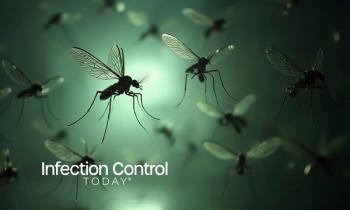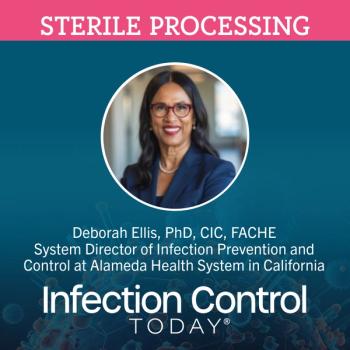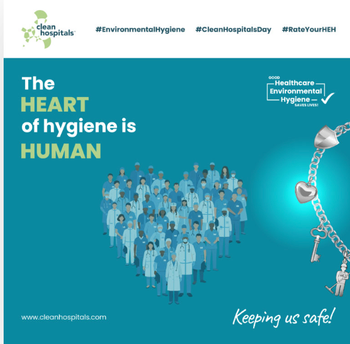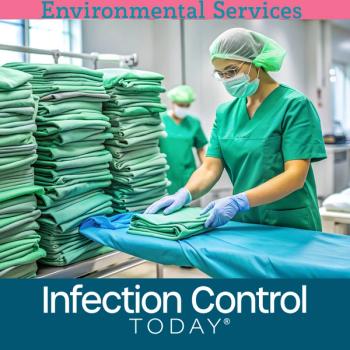
Tackling Biofilm at the Drain: A Growing Challenge in Hospital Sink Hygiene
Hospitals may rely on handwashing as a frontline defense against infection, but the very sinks meant to promote hygiene can harbor dangerous pathogens. At this year’s AHE Exchange Summit, microbiologist Mark Wiencek, PhD, T-CHEST, explores how biofilms in sink drains create a persistent threat to patient safety—and what infection prevention and EVS teams can do about it.
As the health care industry sharpens its focus on infection prevention, one unassuming fixture continues to pose a serious risk: the sink drain. At the upcoming Association for the Health Care Environment (AHE) Exchange25, AHE Education & Solution Summit, principal microbiologist Mark Wiencek, PhD, of Contec Professionals will highlight a pervasive yet under-addressed threat in hospitals—biofilm in sink drains—and the evolving science behind its control.
Exchange25 will be held from June 8 to 11, 2025, in Columbus, Ohio, and is the premier environmental services (EVS) conference.
Biofilms, communities of microorganisms that attach to surfaces and encase themselves in protective layers, are notoriously difficult to remove. Although commonly found in industrial and environmental settings, they also thrive in health care facilities, particularly in moist environments such as sink drains. Once established, these microbial colonies can harbor dangerous pathogens and resist standard disinfectants.
“The next thing is to consider what the problem is. Why? For instance, if the microbes are in the drain of the sink, how do they get disseminated to the point where they could cause infections in patients?” Wiencek said in an interview with Infection Control Today®. “We discuss the splash zone coming down and hitting the sink, along with the difficulty of disinfecting the trap and other parts of the sink. Then I address the question: What is biofilm? Why are these microbes able to survive in a sink exposed to soap and other substances, or even when people attempt to disinfect it? How are microbes surviving? So, I explain that they thrive in a community attached to the walls of the pipe and drain, which provides them protection.”
Wiencek's presentation at AHE Exchange will detail how sink drains serve as persistent reservoirs for health care-associated infections. Numerous studies have traced outbreaks to bacteria lingering below the drain line. These microbes can spread through splashing, aerosolization, and contaminated surfaces, especially when water hits the drain and rebounds into surrounding areas.
Traditional cleaning protocols often miss the mark, focusing primarily on faucet handles and basins while overlooking the drain and P-trap, where biofilm tends to accumulate. Even when disinfectants are applied, their efficacy is limited by poor contact time and dilution as they flow quickly through the plumbing system. Wiencek explained that mechanical cleaning, such as that used in dental hygiene to remove plaque (another form of biofilm), is often unfeasible in health care sinks due to their inaccessibility.
“You have to brush, you have to floss,” Wiencek said during the ICT interview. “You have to mechanically remove that plaque, which is a biofilm of microbes on your teeth to be able to reduce the risk of getting cavities and gum disease, and even then, we have to go pay professionals at least every 6 months to go in there and scrape and grind and all the things that we ate from going to the dentist. But that's all about that mechanical removal that's so key for getting rid of biofilm.”
Some interventions show promise, including foaming disinfectants that cling to surfaces longer and targeted heat treatments that raise temperatures in the sink’s P-trap to lethal levels. Wiencek said that he will explain how redesigning sink drains for improved access and easier cleaning is another potential solution being explored. However, most approaches require cross-departmental collaboration between infection prevention, EVS, and facilities teams—something many institutions still struggle to coordinate.
Wiencek stresses that while infection preventionists may be aware of the risks, the burden of response too often falls into a grey area. EVS teams can clean only up to a point; the plumbing below remains the responsibility of facilities management. Clarifying this divide, expanding EVS training, and investing in accessible sink designs could lay the foundation for more effective control strategies.
Ultimately, while eliminating sinks altogether is unrealistic, recognizing them as potential biohazard zones is the first step toward reducing risk and safeguarding patient care environments.
Newsletter
Stay prepared and protected with Infection Control Today's newsletter, delivering essential updates, best practices, and expert insights for infection preventionists.





